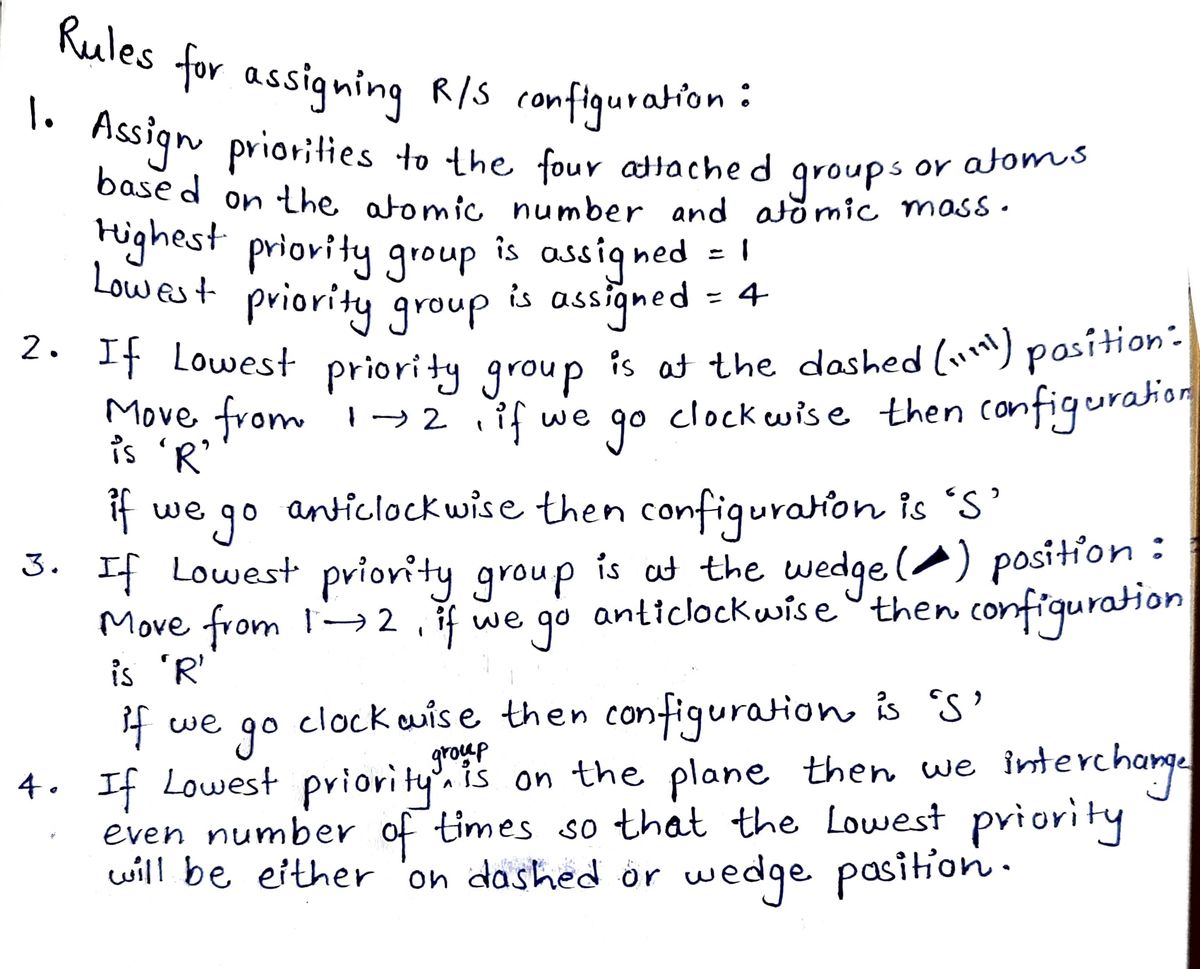CHCE the tabl CI HÅ ****** H Br CUCIT Molecule 1 CI Br H 0 Molecule 4 m ******** H Br CI 0 Onone of the above core m Molecule 2 Br **** "Cl H Molecule 5 Br "H CI Molecule 3 CI Br O Molecule 6 H H HO"" CI 0 Br X 5
CHCE the tabl CI HÅ ****** H Br CUCIT Molecule 1 CI Br H 0 Molecule 4 m ******** H Br CI 0 Onone of the above core m Molecule 2 Br **** "Cl H Molecule 5 Br "H CI Molecule 3 CI Br O Molecule 6 H H HO"" CI 0 Br X 5
Chemistry
10th Edition
ISBN:9781305957404
Author:Steven S. Zumdahl, Susan A. Zumdahl, Donald J. DeCoste
Publisher:Steven S. Zumdahl, Susan A. Zumdahl, Donald J. DeCoste
Chapter1: Chemical Foundations
Section: Chapter Questions
Problem 1RQ: Define and explain the differences between the following terms. a. law and theory b. theory and...
Related questions
Question

Transcribed Image Text:**Stereochemistry: Identifying the Enantiomer of a Simple Organic Molecule**
**Exercise:**
Choose an option under each structure in the table that is an enantiomer of the molecule shown. If none of them are, check the "none of the above" box under the table.
**Reference Molecule:**
A diagram displays a tetrahedral carbon atom with the following substituents:
- Chlorine (Cl) on a wedge bond
- Bromine (Br) on a dashed wedge bond
- Hydrogen (H) on a solid line
**Options:**
1. **Molecule 1:**
- Bromine (Br) on a solid line
- Chlorine (Cl) on a wedge bond
- Hydrogen (H) on a dashed wedge bond
- Checkbox
2. **Molecule 2:**
- Bromine (Br) on a dash wedge bond
- Chlorine (Cl) on a solid line
- Hydrogen (H) on a wedge bond
- Checkbox
3. **Molecule 3:**
- Chlorine (Cl) on a solid line
- Hydrogen (H) on a wedge bond
- Bromine (Br) on a wedge bond
- Checkbox
4. **Molecule 4:**
- Bromine (Br) on a wedge bond
- Hydrogen (H) on a solid line
- Chlorine (Cl) on a dashed wedge bond
- Checkbox
5. **Molecule 5:**
- Bromine (Br) on a dashed wedge bond
- Hydrogen (H) on a wedge bond
- Chlorine (Cl) on a solid line
- Checkbox
6. **Molecule 6:**
- Hydrogen (H) on a solid line
- Hydroxyl (OH) on a dash wedge bond
- Bromine (Br) on a wedge bond
- Checkbox
**Other Options:**
- "None of the above" checkbox
**Controls:**
- Explanation button
- Check button
Please select the appropriate enantiomer by ticking the correct checkbox. If none of the structures are enantiomers, select "none of the above."
Expert Solution
Step 1: Determination of configuration:
Enantiomers have opposite configuration at each stereocenter.

Step by step
Solved in 3 steps with 2 images

Knowledge Booster
Learn more about
Need a deep-dive on the concept behind this application? Look no further. Learn more about this topic, chemistry and related others by exploring similar questions and additional content below.Recommended textbooks for you

Chemistry
Chemistry
ISBN:
9781305957404
Author:
Steven S. Zumdahl, Susan A. Zumdahl, Donald J. DeCoste
Publisher:
Cengage Learning

Chemistry
Chemistry
ISBN:
9781259911156
Author:
Raymond Chang Dr., Jason Overby Professor
Publisher:
McGraw-Hill Education

Principles of Instrumental Analysis
Chemistry
ISBN:
9781305577213
Author:
Douglas A. Skoog, F. James Holler, Stanley R. Crouch
Publisher:
Cengage Learning

Chemistry
Chemistry
ISBN:
9781305957404
Author:
Steven S. Zumdahl, Susan A. Zumdahl, Donald J. DeCoste
Publisher:
Cengage Learning

Chemistry
Chemistry
ISBN:
9781259911156
Author:
Raymond Chang Dr., Jason Overby Professor
Publisher:
McGraw-Hill Education

Principles of Instrumental Analysis
Chemistry
ISBN:
9781305577213
Author:
Douglas A. Skoog, F. James Holler, Stanley R. Crouch
Publisher:
Cengage Learning

Organic Chemistry
Chemistry
ISBN:
9780078021558
Author:
Janice Gorzynski Smith Dr.
Publisher:
McGraw-Hill Education

Chemistry: Principles and Reactions
Chemistry
ISBN:
9781305079373
Author:
William L. Masterton, Cecile N. Hurley
Publisher:
Cengage Learning

Elementary Principles of Chemical Processes, Bind…
Chemistry
ISBN:
9781118431221
Author:
Richard M. Felder, Ronald W. Rousseau, Lisa G. Bullard
Publisher:
WILEY